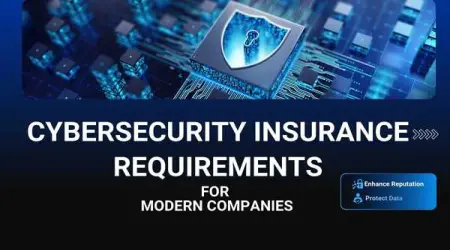

How to Build a Strong Digital Security Strategy for Small Businesses!
How to Build a Strong Digital Security Strategy for Small Businesses!
In today's digital age, cyber security is not just a concern for large corporations. Small businesses are becoming targets of cybercriminals, often due to limited resources and less robust security systems. A successful cyber attack can cause significant financial losses, damage your reputation, and even shut down your business. Therefore, developing a strong digital security strategy is essential to protecting your business, customers, and future.
Understanding the Risks: Common Cyber Threats to Small Businesses
Phishing attack
Phishing is one of the most common cyber threats that small businesses face. Cybercriminals use fraudulent emails or websites to trick employees into revealing sensitive information such as passwords or credit card numbers. These attacks are becoming increasingly sophisticated, so it is imperative to educate your team on how to identify and avoid phishing scams.
Ransomware
Ransomware is malware that encrypts your business data, holding it hostage until a ransom is paid. Small businesses are often targeted because they are more likely to pay a ransom to regain access to their critical data. A robust backup and recovery plan can help mitigate the effects of a ransomware attack.
Insider threats
Insider threats occur when an employee, contractor or other trusted person intentionally or unintentionally compromises the security of your business. This can be through data theft, abuse of access privileges or being a victim of social engineering attacks. Implementing strict access control and monitoring systems can help prevent insider threats.
Malware and viruses
Malware, including viruses, worms and Trojans, can infect your business systems, causing data loss, operational disruption and unauthorized access. Regularly updating your antivirus software and performing security scans are essential to protect against malware.
Ten Best Privacy Security Browsers for Data Protection
The foundation of a strong digital security strategy
Assess your current security posture
Before developing your security strategy, please look at your current security measures and identify any gaps or vulnerabilities. This will help you prioritize areas and allocate resources more effectively.
Identifying essential resources and information
Could you determine which assets and data are most important to your business? This may include customer information, financial records, intellectual property or proprietary systems. Protecting these assets should be a top priority in your security strategy.
Understanding compliance requirements
Depending on your industry, specific regulations and compliance requirements may exist related to data protection and cybersecurity. You can familiarize yourself with these requirements to ensure your security measures comply with legal standards and avoid possible penalties or fines.
Build a multi-layered defense
Implementing firewalls and network security
Firewalls act as the first line of defense against external threats by blocking unauthorized access to your network. Please make sure your firewall is configured correctly, and consider using an intrusion detection and prevention system (IDPS) to improve network security further.
Use strong passwords and multi-factor authentication (MFA).
Weak passwords are a common entry point for cybercriminals. Enforce strong password policies, requiring complex passwords and regular updates. Additionally, use multi-factor authentication (MFA) to add an extra layer of security to your account and system.
Ten Best Technology Innovations in 2024
Regular updating and patching system
Software updates and patches often include security
Enhancements that protect against known vulnerabilities. To keep your systems protected from the latest threats, regularly update your operating system, applications, and security software.
Securing mobile devices and remote access
With the rise of remote work, securing mobile devices and remote access is more important than ever. Implement security measures such as mobile device management (MDM) solutions, VPNs for secure remote access, and strict BYOD (bring your device) policies to keep your business data safe.
Employee training and awareness
Developing a cybersecurity training program
Employees are often the first line of defense against cyber threats. Create a comprehensive cybersecurity training program that educates your team on best practices, such as identifying phishing emails, using secure passwords, and reporting suspicious activity.
Fishing simulation exercise
You can conduct regular phishing simulations to test your staff's ability to detect and respond to phishing attempts. These exercises can help reinforce training and identify areas where additional training may be needed.
Fostering a safety-first culture
Emphasize the importance of cybersecurity in daily operations to build a security-first culture within your business. Encourage employees to take ownership of their role in protecting the business and reward proactive security practices.
Data backup and recovery plan
Importance of regular data backup
Regular data backups are essential to protect your business from data loss due to cyber attacks, hardware failures or other disasters. I'd like you to implement a backup schedule that includes on-site and off-site backups to ensure your data is protected and recoverable.
Could you implement a disaster recovery plan?
A disaster recovery plan outlines your business's steps to recover from a cybersecurity incident, such as a data breach or ransomware attack. Please ensure your plan is comprehensive and includes roles, responsibilities and communication strategies for responding to an incident.
Testing your backup and restore processes
Please check regularly to ensure your backup and recovery processes are working effectively. This may involve conducting mock disaster recovery exercises to identify weaknesses or areas for improvement.
Monitor and respond to incidents
Setting up a continuous monitoring system
Continuous monitoring systems can help detect and respond to cyber threats in real time. Implement monitoring tools that track network traffic, system activity, and user behavior to identify potential security incidents before they escalate.
Developing an incident response plan
An event response plan outlines your business's actions during a cybersecurity event. This plan should include methods for threat containment, damage mitigation and communication with stakeholders. Please look over and update your incident response plan to reflect evolving threats.
Conduct regular security audits.
Regular security audits are essential to identify vulnerabilities and ensure your security systems are up to date. I'd like you to conduct internal and external audits to assess the effectiveness of your security strategy and make necessary adjustments.
Ten Best Printer Manufacturers Companies Dominating Market
Working with Third-Party Vendors
Assess vendor security practices
When working with third-party vendors, evaluating their security practices is critical to ensure they meet your business standards. This includes reviewing their security policies and procedures and ensuring compliance with industry regulations.
Could you set up vendor security agreements?
You can set up clear security agreements with your vendors that outline their responsibilities in protecting your data. These agreements should include provisions for compliance with data protection, incident reporting and security standards.
Regularly review third-party security.
Review the security practices of your third-party vendors regularly to ensure they continue to meet your requirements. This may include conducting audits, requesting security reports, and monitoring for any changes in their security posture.
Staying updated with emerging threats
Keep up with cybersecurity news and trends.
Cyber threats constantly evolve, so it's essential to stay abreast of the latest cybersecurity news and trends. To stay up to date with emerging threats, follow reputable sources like cybersecurity blogs, news sites, and government agencies.
Participating in the cybersecurity community
Join cyber security communities and forums to connect with other professionals and share knowledge. These communities can be valuable resources for staying abreast of the latest cybersecurity threats and best practices.
Attending industry conferences and webinars
Attend industry conferences, webinars, and workshops to learn from experts and stay current with the latest cyber security trends. These events often provide valuable insight into new technologies, threats, and strategies for protecting your business.
Summary
Developing a strong digital security strategy is essential to protecting your small business from cyber threats. By following the steps outlined in this guide, you can build a multi-layered defense that protects your critical assets, educates your employees, and prepares your business for potential incidents. Cybersecurity is an ongoing process, and being vigilant and proactive is key to maintaining a secure business environment.
FAQs About Digital Security Strategy for Small Businesses
How often should I update my cyber security strategy?
Your cybersecurity strategy should be reviewed and updated regularly, at least once a year or whenever significant changes in your business operations or threat landscape exist.
Is Investing in Cyber Security Insurance Necessary for Small Businesses?
Cybersecurity insurance can provide financial protection during a cyber attack, covering costs such as legal fees, data recovery, and business interruption. It is a worthwhile investment for small businesses.
What are the most common symptoms of a cyberattack?
Common symptoms include abnormal system activity, unexpected software behavior, unauthorized access attempts, and sudden slowdowns in network performance.
Can remote work increase cyber security risks?
Yes, remote work can increase cybersecurity risks, mainly if employees use unsecured networks or personal devices. I think it's essential to implement strong security measures for remote access.
How can I ensure my employees are following cybersecurity best practices?
Regular training, clear safety policies, and a strong safety-first culture can help ensure employees follow best practices. Regular testing and monitoring can identify areas for improvement.




